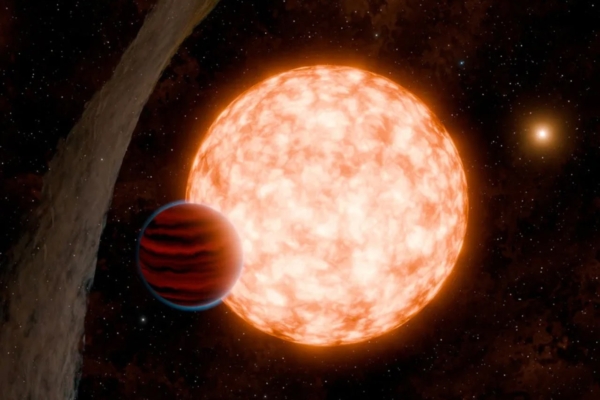Astronomers have discovered a new-born planet around a young star, a planet that formed in just 3 million years, which is considered very fast in cosmic time scales. This finding challenges human understanding of the speed at which planets form.
According to Reuters, the estimated mass of this new-born planet is about 10 to 20 times that of Earth, making it one of the youngest exoplanets discovered so far. It is located next to a protoplanetary disk formed by dense gas and dust revolving around the parent star. The protoplanetary disk provides the necessary components for planet formation.
The star around which this planet orbits is expected to evolve into an orange dwarf star, with a mass approximately 70% of the Sun and a brightness about half of the Sun’s. It is situated in our Milky Way galaxy, approximately 520 light-years away from Earth. A light-year is the distance that light travels in one year, roughly equivalent to 5.9 trillion miles (9.5 trillion kilometers).
Madyson Barber, a graduate student in the Department of Physics and Astronomy at the University of North Carolina at Chapel Hill and the lead author of this research, stated, “This discovery confirms that planets can form and take shape within 3 million years, which was not clear before because Earth’s formation typically takes 10 to 20 million years.”
“We don’t truly understand how long planet formation takes,” added Andrew Mann, a UNC astrophysicist and a co-author of the study. “We know that the formation of giant planets must be faster than the dissipation of the disk, as they need to acquire a significant amount of gas from the disk, but disk dissipation takes 5 to 10 million years. So, does planet formation take 1 million years? 50,000 years? 100,000 years?”
This planet has been named IRAS 04125+2902 b and TIDYE-1b, orbiting its star every 8.8 days, at a distance roughly one-fifth of the distance between the innermost planet of the solar system, Mercury, and the Sun. Its mass falls between Earth, the largest rocky planet in the solar system, and Neptune, the smallest gas giant planet, with a lower density than Earth and a diameter about 11 times that of Earth, with its chemical composition still unclear.
Researchers suspect that this planet initially formed farther from the star and migrated inward.
“Large planets are not easily formed near stars because the protoplanetary disk dissipates more quickly closer to the star, meaning there’s a lack of the necessary materials for rapidly forming large planets at such close distances,” Barber explained.
Stars and planets are formed from interstellar gas and dust clouds.
Barber explained, “To form a star-planet system, the gas and dust cloud collapses and begins rotating into a flat environment, with the star at the center and a disk surrounding it. Planets will then form within this disk, which will start dissolving from the inner region close to the star.”
Researchers used the method known as transit to detect this planet, observing when the planet passes in front of the star from Earth’s perspective, causing a decrease in the star’s brightness. This discovery was captured by the Transiting Exoplanet Survey Satellite (TESS) space telescope, operated by NASA.
“This is the youngest known transiting planet, comparable to the youngest known planets,” Barber said.
He further added, “Previously, people thought we couldn’t find such young transiting planets because the disk would obstruct observations. However, due to some reasons that we are still uncertain about, the outer disk was distorted, leaving a perfect window to the star, allowing us to detect the transit phenomenon.”

